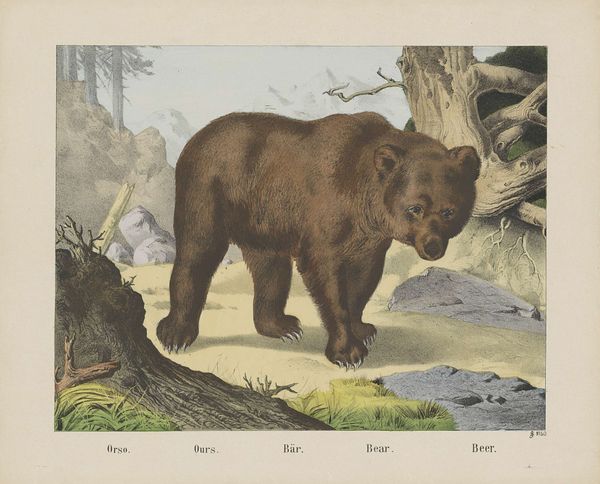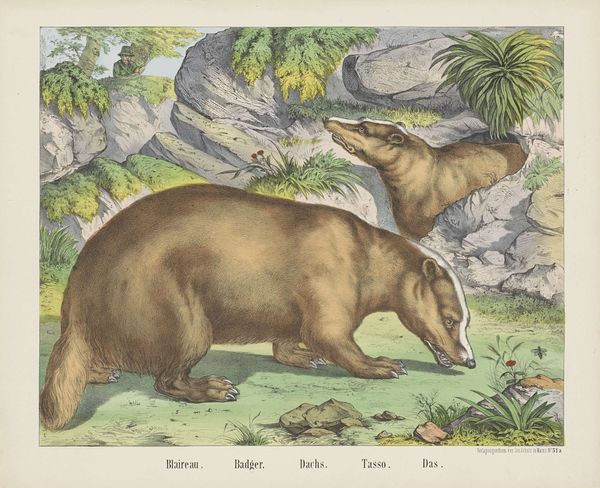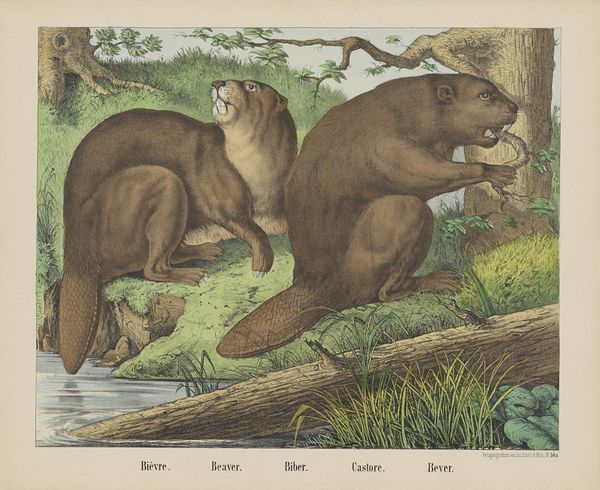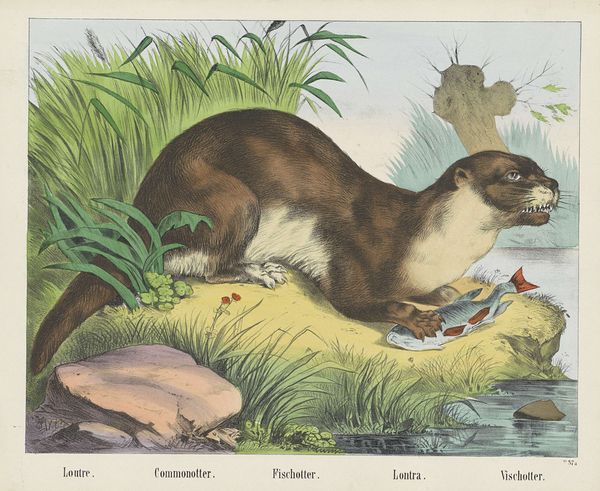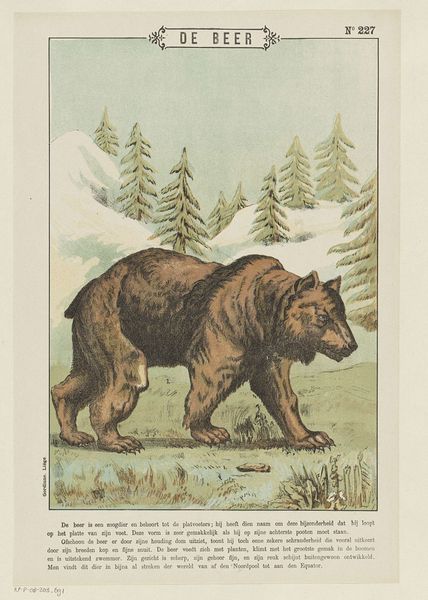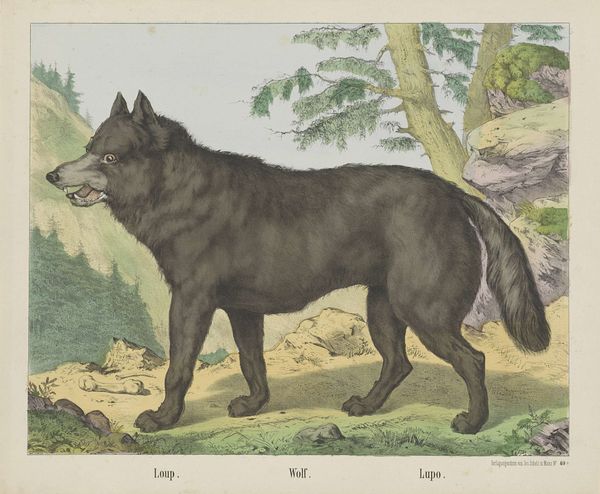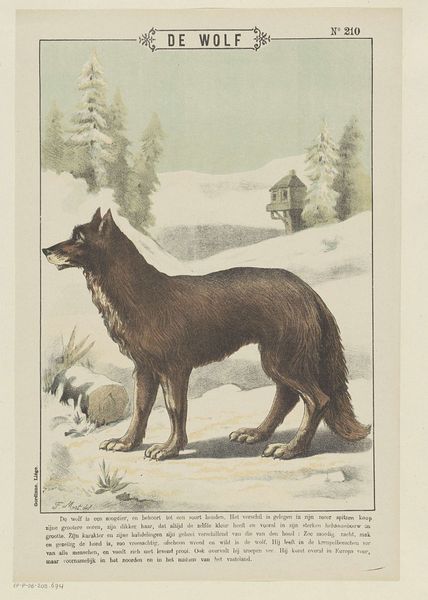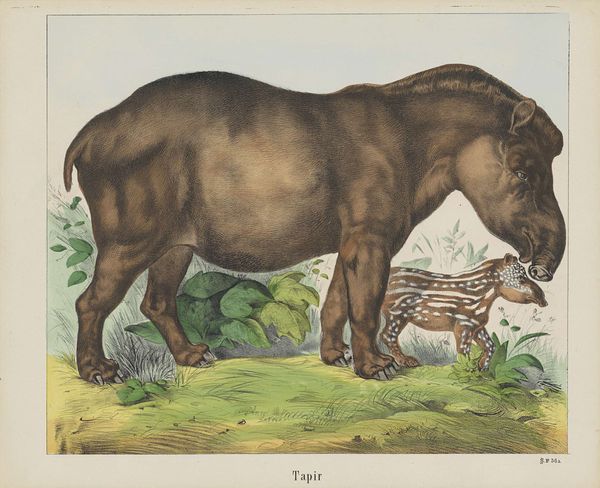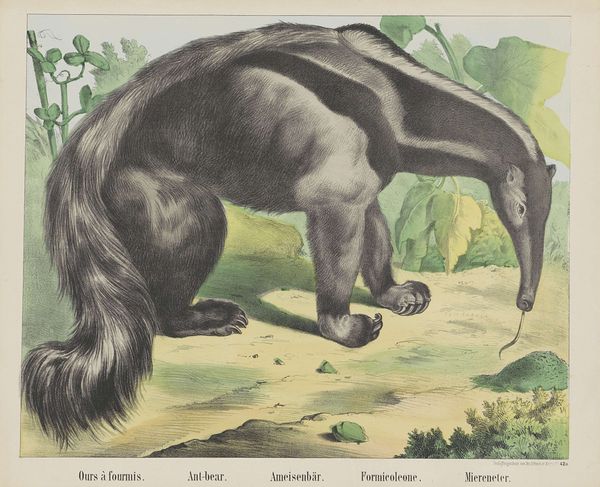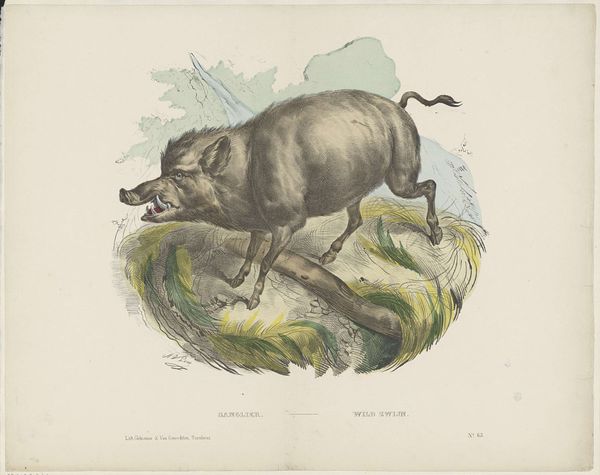
drawing, print, watercolor, pencil
drawing
water colours
animal
landscape
figuration
watercolor
coloured pencil
pencil
realism
Dimensions: height 349 mm, width 430 mm
Copyright: Rijks Museum: Open Domain
Curator: What strikes me immediately about this image is its air of melancholy, a somber tone underscored by the solitary fox, hunched almost in a posture of defeat, set against that deforested backdrop. Editor: Well, this print, dated between 1829 and 1880, by R. Schulz, gives us a glimpse into a romanticized realism of that era. Look closely at the ways he uses watercolor and pencil—there's a stark quality about the deforested landscape you picked up on, but notice how that starkness underscores this depiction of nature under threat. Curator: Exactly. The cleared land, stumps replacing the trees, it echoes a human impact that unsettles the image. And placing the fox there… the creature feels like an emblem of wilderness in retreat, its symbolic association with cleverness or trickery turned to vulnerability. Editor: You're keying in on something important there—how this image functions symbolically, but also politically. Think of the context: expanding industry, increased hunting... Presenting the fox in this way subtly critiques humanity's relationship with the natural world. This wouldn't be your typical heroic depiction of animals being pursued by noblemen, we might ask ourselves, who the real hunter is here? Curator: It also makes me consider how animals, foxes specifically, exist in our collective imagination, bearing so much projection – intelligence, adaptability but also cunning… is that why Schulz depicts the animal in that kind of mournful attitude? Editor: Possibly. Consider how artists at the time are grappling with Realism. They wanted to present the world, warts and all, without sentimental fluff, and using art to advocate for pressing social issues, even those concerning wildlife and habitat, would have been a way for artists to get involved with contemporary politics. The directness of Schulz’s visual language here helps communicate his critique quite clearly. Curator: It’s fascinating how the layering of artistic technique, historical context and inherent symbolism create such a layered and emotionally evocative representation. It becomes more than just a portrait of a fox. Editor: Precisely. It’s an image that invites us to question our role in shaping the environment and our perception, even the symbols that constitute what "nature" might mean. A print like this, viewed over a century later, it keeps raising important questions.
Comments
No comments
Be the first to comment and join the conversation on the ultimate creative platform.
